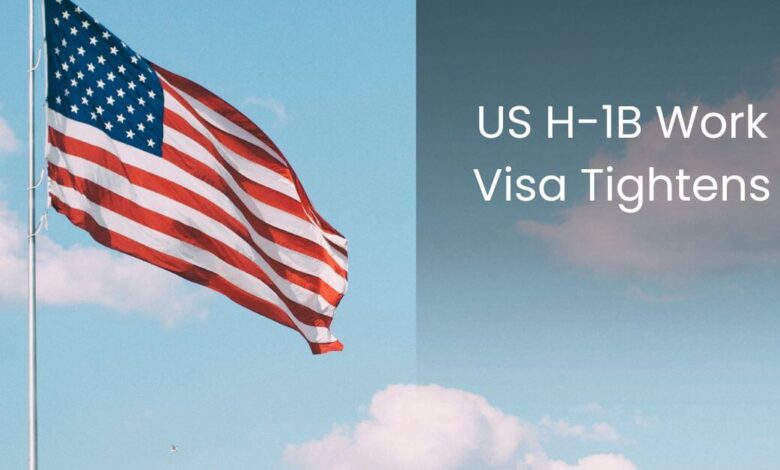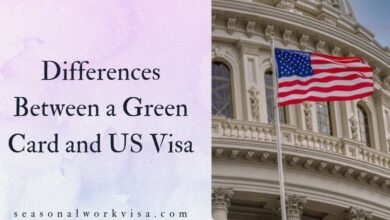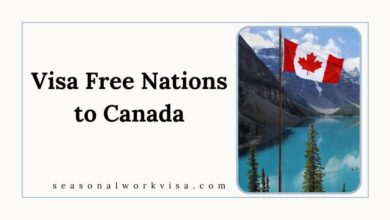US H-1B Work Visa Tightens – Alternate Work Visas

The H-1B visa has been the most popular option for qualified foreign workers looking to work in the US for many years. However, many foreign professionals are looking for other work visa options due to the program’s growing scrutiny and uncertainty, especially after Donald Trump returned as president of the United States. With its finite annual limits and increasing rejection rates, the H-1B visa lottery system has forced firms and talented individuals to look for alternative routes to lawfully work in the United States.
Alternative visa categories such the H-2A, H-2B, H-3, L, O, P, Q, and R visas are examined in this investigative report; each of these categories offers distinct chances for foreign professionals, seasonal workers, trainees, and specialized specialists.
L-1 Visa: Intra-Company Transfers:
Multinational corporations can send executives, managers, and staff with specific knowledge to their U.S. headquarters by using the L-1 visa. Managers and executives are eligible for the L-1A visa, whereas employees with specific expertise are eligible for the L-1B visa. For tech workers who are unable to obtain an H-1B visa, it is frequently the preferable option.
Types of L-1 Visas:
- L-1A Visa: For executives and managers, allowing them to oversee business operations or manage teams.
- L-1B Visa: For employees with specialized knowledge, such as proprietary company processes, technology, or business models.
Why Is the L-1 Visa a Good Alternative to the H-1B?
- Unlike the H-1B visa, which has an annual cap, the L-1 visa has no quota limitations, making it more accessible.
- It is commonly used by tech professionals and corporate employees who didn’t secure an H-1B visa.
- It is a dual-intent visa, meaning holders can apply for a Green Card without violating their visa status.
Difficulty Level Compared to H-1B:
- Easier in terms of approval rates because there is no lottery system like the H-1B.
- More restrictive as it is only available for multinational companies transferring employees.
- Pros: Known for promoting cross-cultural exposure, it is accessible to people from a variety of cultural backgrounds.
- Cons: No long-term work pathway and restricted to approved exchange programs.
How to Apply:
O Visa: Individuals with Extraordinary Ability
People with exceptional talent in the arts, sciences, business, education, or sports are eligible for the O-1 visa. Scientists, researchers, sportsmen, and artists frequently use it. Support workers who help O-1 holders are granted O-2 visas.
- Difficulty Level Compared to H-1B: More difficult due to high documentation requirements.
- Pro: It provides a direct path for renowned professionals and has no annual cap.
- Cons include the need for substantial proof of exceptional skill and the lack of a permanent work permit.
- Apply: https://www.uscis.gov/
H-2A Visa: Agricultural Workers’ Entry Point
For foreign agricultural laborers, the H-2A visa is a temporary work authorization. To fill seasonal labor shortages, employers in sectors including farming, cattle, and nurseries mainly rely on this visa. The H-2A visa permits workers to remain for a maximum of three years and has no numerical cap. Employer-sponsored, the program necessitates evidence that no U.S. workers are available to fill the positions.
- Compared to H-1B, this visa is easier because there is no yearly cap, but it is only available for agricultural jobs.
- Pros There is no yearly cap on the number of visas granted, and there is a route to longer employment if the company needs workers.
- Cons: No direct route to a Green Card and limited to agricultural jobs.
- Apply: https://www.uscis.gov/
P Visa: Athletes, Artists, and Entertainers
Internationally renowned sports, entertainers, and performers are covered under the P visa. It is separated into P-1 (athletes or teams), P-2 (artists participating in reciprocal exchange programs), and P-3 (artists participating in culturally distinctive programs).
- Level of Difficulty Compared to H-1B: Limited to certain industries, but easier for qualified persons.
- Pros: Perfect for athletes, entertainers, and performers, and stay can be extended according to contract length.
- Cons: Requires employer sponsorship and proof of international recognition.
- Apply: https://fam.state.gov/fam/09FAM/09FAM040214.html.
H-3 Visa: Training and Special Education Exchange
The H-3 visa is intended for exchange travelers with special education needs and trainees. With this visa, foreign nationals can get training in the United States that they can’t get back home. Engineering, banking, medical research, and aviation are examples of common industries.
- Difficulty Level Compared to H-1B:, but it does not grant work authorization beyond training.
- Pros: This visa option can result in professional experience in the United States, and there is no cap on the number of visas that can be awarded.
- Cons: Not applicable to graduate medical training; no employment authorization outside the training scope.
- Apply: https://www.uscis.gov/
R Visa: Religious Workers
Religious workers who are members of a recognized denomination or who are coming to the United States to work in religious vocations are eligible to apply for the R visa. It permits people to work in non-profit religious organizations, synagogues, churches, and mosques.
- Difficulty Level Compared to H-1B: Less complicated than H-1B, but limited to religious work.
- Pros: No numerical cap, dual-intent visa with possibilities for a Green Card.
- Cons: Must work in a religious capacity and be sponsored by a religious group.
- Apply: https://www.uscis.gov
Q Visa: International Cultural Exchange Program
Like the J-1 visa, the Q visa is designed for cultural exchange programs that encourage the sharing of history, art, and customs from throughout the world. Cultural educators and museum staff frequently use it.
- Difficulty Level Compared to H-1B: Less complicated, but only applicable to cultural exchange initiatives.
- Pros include being accessible to people from a variety of ethnic backgrounds and well-known for promoting intercultural interaction.
- Cons: There is no long-term employment pipeline and exchange programs are restricted.
- Apply: https://www.uscis.gov
H-2B Visa: Seasonal Non-Agricultural Jobs
Temporary non-agricultural workers in sectors like construction, landscaping, hospitality, and food processing are covered under the H-2B visa. Because it has an annual cap of 66,000 visas, it is very competitive. Because demand frequently outpaces supply, early application is essential.
- Difficulty Level Compared to H-1B: similar because of the yearly cap and high demand.
- Pros: Covers a range of non-agricultural job categories and is renewable for a maximum of three years.
- Cons: There is no direct route to permanent residence, and availability is limited by an annual cap.
- Apply: https://www.dol.gov
Conclusion:
With the increasing uncertainty surrounding the H-1B visa, foreign professionals have several alternative pathways to work in the U.S. Each visa category—L-1, O-1, H-2A, H-2B, P, Q, R, and H-3—offers distinct opportunities based on industry, skill level, and work duration. Exploring these options can help professionals find the right fit for their career goals while navigating the complex U.S. immigration system.
Frequently Asked Questions:
Why are foreign professionals seeking alternatives to the H-1B visa?
Due to the H-1B visa’s annual cap, increasing rejection rates, and growing scrutiny, many foreign professionals explore alternative visa options.
Which visa is suitable for agricultural workers?
For temporary agricultural workers, the H-2A visa is perfect because it allows them to work seasonally in nurseries, farming, and livestock.




